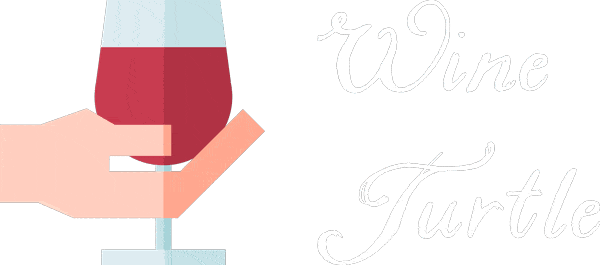Amarone Unveiled: Exploring Italy’s Iconic Wine
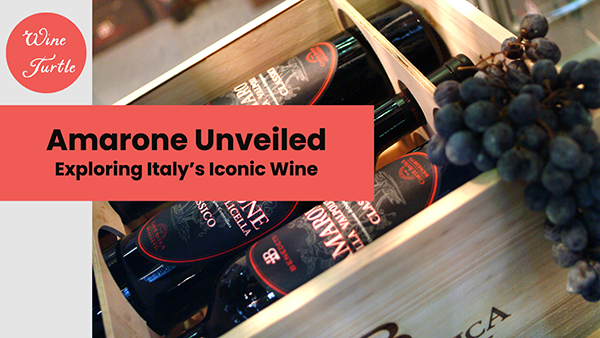
In this guide, I will take you on a journey through the world of Amarone, a wine that has captured the hearts of wine enthusiasts worldwide. Prepare for some unique characteristics and an intricate winemaking process!
What is Amarone Wine?
Amarone della Valpolicella, commonly referred to as Amarone, is a prestigious Italian dry red wine with a distinctive richness.
It falls under the DOCG designation, which highlights its exceptional quality. Amarone is crafted from partially dried grapes, predominantly consisting of Corvina (45-95%, with up to 50% potentially substituted by Corvinone), Rondinella (5-30%), and a mix of other permitted red grape varieties (up to 25%).
Hailing from the Valpolicella region in northern Italy, Amarone is a full-bodied, rich, and complex red wine.
The rich flavor of Amarone wine comes from a unique drying process known as "appassimento" where the grapes are dried before fermentation.
Amarone wines are known for their concentrated flavors, high alcohol content, and long aging potential.
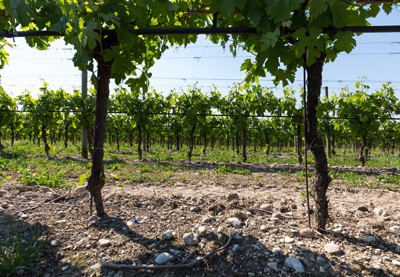
Amarone Flavor Profile
Amarone wines boast an intense and complex flavor profile, characterized by a balance of dried fruit, raisin, and spice notes, with undertones of chocolate, tobacco, and leather.
Its rich and velvety texture is accompanied by a pleasantly bitter finish, making Amarone a delightful wine to savor.
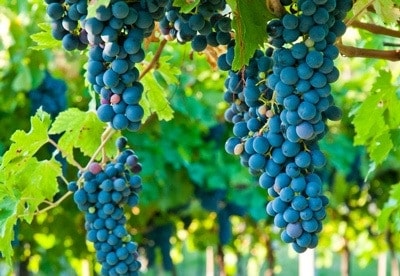
Amarone Wine Grapes
Amarone is made from a blend of three primary grape varieties: Corvina, Rondinella, and Molinara.
Each grape contributes unique characteristics to the final wine:
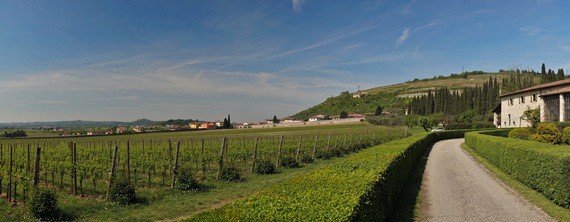
A Detailed Account of the Wine Making Process: Appassimento
Amarone wine is made using a unique and traditional process called "appassimento," which involves the drying of grapes before fermentation.
Here's an overview of the Amarone winemaking process:
- Grape Selection: Amarone is made primarily from the Corvina, Rondinella, and Corvinone grape varieties, although other local varieties may also be used. Producers carefully select the best bunches of grapes, ensuring they are healthy and free from any damage.
- Drying: The selected grapes are placed on drying racks or straw mats called "arele" in well-ventilated drying rooms or "fruttai." The drying process takes place over the course of 3 to 4 months, during which the grapes lose 30-40% of their original weight. This concentrates the sugars, flavors, and aromas in the grapes, resulting in a more intense and complex wine.
- Fermentation: After the drying period, the grapes are pressed, and the juice is left to ferment with the grape skins for an extended period. This allows for the extraction of tannins, color, and flavor compounds, contributing to Amarone's distinct characteristics. The fermentation process for Amarone is typically slow, taking several weeks or even months, and is carried out at relatively low temperatures.
- Aging: Once fermentation is complete, the Amarone wine is transferred to barrels for aging. Traditionally, large Slavonian oak casks called "botti" were used, but modern winemakers might also use smaller French oak barrels or a combination of the two. Amarone wines are aged for a minimum of two years, but many producers choose to age their wines for much longer, often up to five years or more, to develop additional complexity and depth.
- Bottling and Further Aging: After the aging process, the wine is bottled and may undergo further aging in the bottle before being released for sale. This additional aging can help to soften the tannins and integrate the flavors, resulting in a more harmonious and balanced wine.
The appassimento process and the extended aging contribute to Amarone's unique and intense flavor profile, marked by rich, concentrated fruit, high alcohol content, and a distinctive balance of sweetness and bitterness.
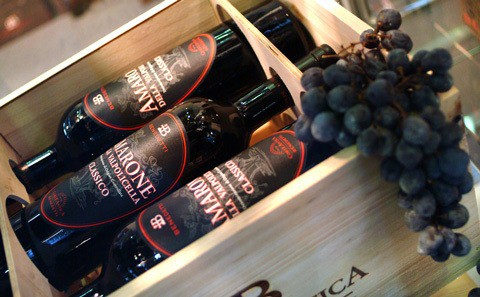
The Traditional Winemaking Process vs. Modern
Traditional Amarone winemaking involves a labor-intensive, time-consuming process. The grapes are hand-picked and dried on straw mats or wooden racks, with regular manual inspection to remove any damaged or rotting grapes.
The fermentation and aging process often takes place in large oak casks, allowing for slow oxidation and gradual development of complex flavors.
Modern winemaking techniques have streamlined the process, with some producers using temperature and humidity-controlled drying rooms to speed up the drying process.
Additionally, smaller oak barrels and stainless steel tanks are sometimes used for fermentation and aging, resulting in a more fruit-forward and approachable Amarone wine.
Related: Don't miss our guide to Ripasso wine next. Another famous red from Valpolicella.
Variations
There are subtle variations in Amarone wine depending on factors such as grape composition, vineyard location, and winemaking techniques.
Some Amarone wines may be more fruit-forward, while others lean towards a more earthy and savory profile.
Similarly, the alcohol content can vary, with some bottles reaching up to 16% ABV. The best way to appreciate these variations is to try different Amarone wines from various producers and vintages.
Amarone vs. Amarone Riserva
Amarone Riserva is a special category of Amarone wine that must adhere to stricter production regulations.
While regular Amarone wines require a minimum of two years of aging, Amarone Riserva wines must be aged for at least four years.
This extended aging period often results in a more complex and nuanced flavor profile, making Amarone Riserva highly sought after by wine connoisseurs.
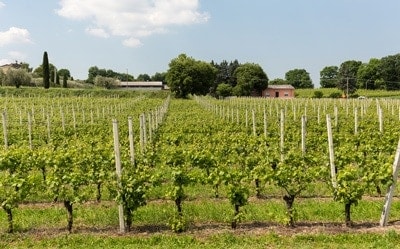
Amarone Food Pairings
Amarone's rich and bold flavors make it an ideal pairing for hearty and flavorful dishes. Some of my personal recommendations include:
3 Beautiful Amarone Wines to Try
Get started on your Amarone journey with one of these amazing examples.
Tommasi Amarone della Valpolicella Classico - $50

Tommasi is a well-known producer of Amarone, and their Classico offering is an excellent entry point for those looking to explore Amarone wines.
This wine is well-balanced with a rich, velvety texture, offering flavors of dried cherries, chocolate, and spice. The price is around $50 per bottle, making it a relatively affordable option for Amarone.
Masi Costasera Amarone della Valpolicella Classico - $70

Masi is another reputable producer of Amarone, and their Costasera Amarone della Valpolicella Classico is a superb mid-range option.
This wine boasts a complex bouquet of ripe fruit, tobacco, and cocoa, with a full-bodied, velvety texture. It typically retails for around $70 per bottle, offering excellent value for the quality.
Quintarelli Amarone della Valpolicella Classico - $300 - $500

For those looking to splurge on a top-tier Amarone, the Quintarelli Amarone della Valpolicella Classico is an outstanding choice.
Widely regarded as one of the finest Amarone wines on the market, it features an exquisite balance of power and elegance, with a rich, concentrated palate of dark fruit, chocolate, and spice.
The price for a bottle of Quintarelli Amarone can range from $300 to $500, depending on the vintage, making it a luxurious treat for special occasions or a worthy addition to any wine collector's cellar.
Amarone wine is a true gem of the Italian wine world, boasting a unique and captivating flavor profile that has captured the hearts of wine lovers worldwide.
Its rich history, distinctive winemaking process, and endless variations make it a must-try for any serious wine enthusiast.
As you embark on your Amarone journey, don't be afraid to explore different producers and vintages to fully appreciate the depth and complexity of this remarkable wine.
